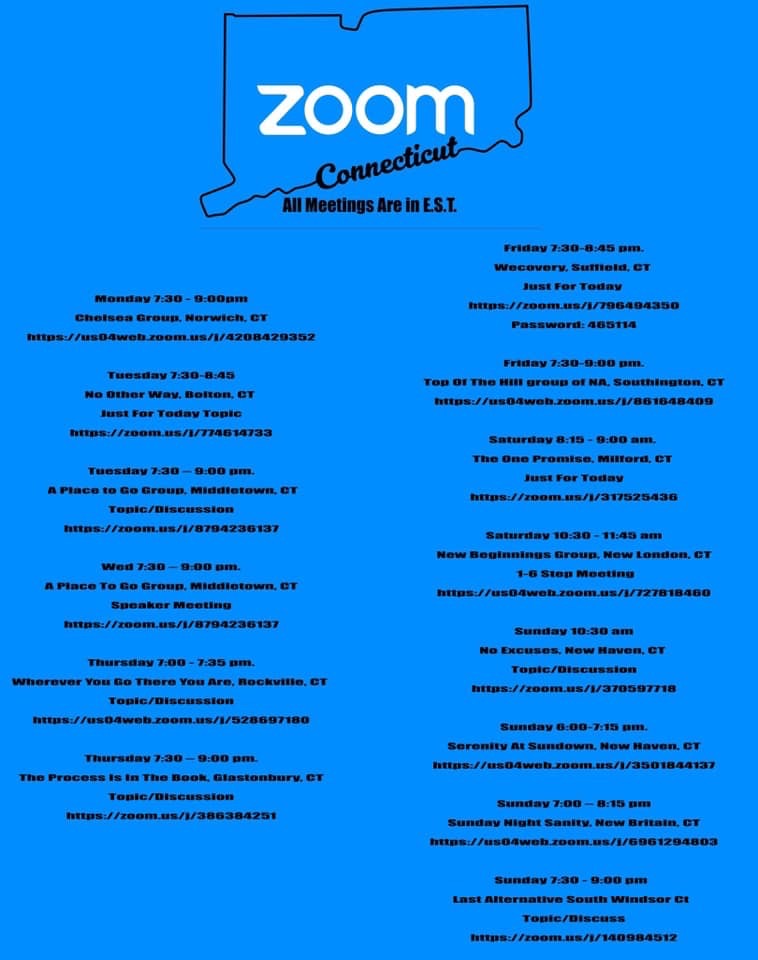

They might talk about their struggles and how they have overcome them. Speaker meetings: Here, only one speaker will be given the floor to share their experience living with the condition.Open meetings: With open meetings, family and loved ones of people living with the disorder are welcome to join the sessions.Closed meetings: Closed meetings are only open to people who are living with alcohol use disorder.These meetings focus on discussing one of those 12 steps and how each member is faring with it. The 12-step model is a set of ideals aimed at helping people recover from alcohol abuse. Step meetings: AA groups use the 12-step model to aid your recovery journey.Then the chairperson allows others to share their stories. Discussion meetings: These meetings open up with one person, typically the chairperson of the day, sharing their struggle with alcohol use disorder.Big book study: These meetings typically feature the chairperson reading parts of the big bookand discussing what was read with the group after.While many members find this time after the meeting valuable, it is up to you if you want to stay and socialize. Some may introduce themselves to you and offer their help or share their experiences getting sober. For Zoom, you can copy the invite to the meeting and email Lee ( ) or Lara ( ) with that information. People gather and talk, and there is a social air in the room once the meeting is over.

Many meetings close with members joining in a moment of silence followed by a prayer, or perhaps by reciting the Responsibility Statement or other A.A.
AA ZOOM MEETINGS SOFTWARE
as a valuable privacy principle for new and longtime members might be read. A number of Manitoba groups are holding online (virtual) meetings using a variety of software platforms (Zoom, Skype, etc.) Local groups can now have their. Many meetings begin with a reading from the Big Book - frequently a portion of Chapter 5 (“How It Works”) or Chapter 3 (“More About Alcoholism”).

It isn’t mandatory to identify yourself but it might be helpful if you are attending your first meeting. With the COVID-19 virus pandemic, gathering restrictions and social distancing has caused our physical meetings throughout the province may experience.

attending the meeting who would like to introduce themselves. The chair will often ask if there are any people new to A.A. Some call for a moment of silence and/or recite the Serenity Prayer. The chair usually opens the meeting with the A.A. These same formats may be applied to group meetings on the Big Book or the Twelve Traditions. Many groups make it a practice to read aloud pertinent material from the Big Book or Twelve Steps and Twelve Traditions at the beginning of the meeting. Step, Tradition or Big Book. Because the Twelve Steps are the foundation of personal recovery in A.A., many groups devote one or more meetings a week to the study of each Step in rotation some discuss two or three Steps at a time. (A Guide for Leading Beginners Meetings is available from G.S.O.) Beginners meetings may also follow a discussion format, or focus on Steps One, Two and Three. Speaker meetings often are open meetings.īeginners. Usually led by a group member who has been sober awhile, these are sessions to help newcomers. Speaker. One or more members selected beforehand "share" - as described in the Big Book - telling "what we were like, what happened, and what we are like now." Depending on the meeting's general guidelines (determined by the "group conscience"), some groups prefer that members who speak have a minimum period of continuous sobriety. literature, such as Alcoholics Anonymous (Big Book), Twelve Steps and Twelve Traditions, As Bill Sees It, Daily Reflections, and from AA Grapevine. Everywhere Switch to Districts Switch to Cities Andover Ansonia Ashford. Background for many topic meetings derives from A.A. member serving as “leader” or “chair” opens the meeting using that group’s format, and selects a topic for discussion. Discussion. Whether closed or open, an A.A.


 0 kommentar(er)
0 kommentar(er)
